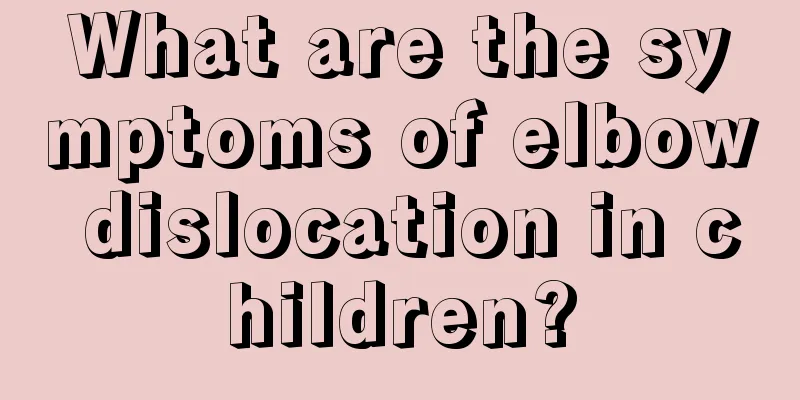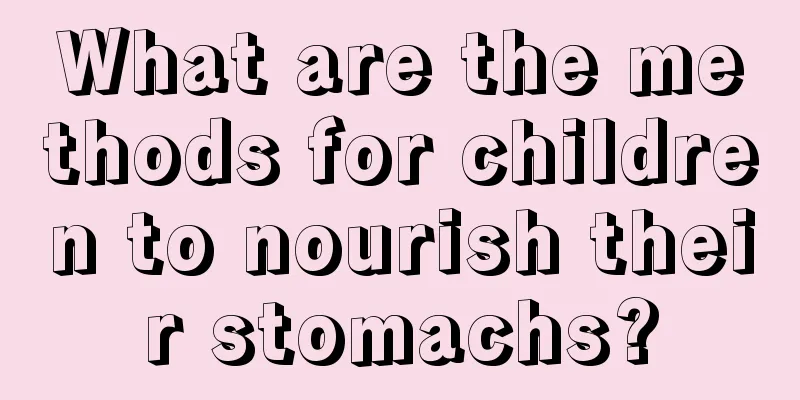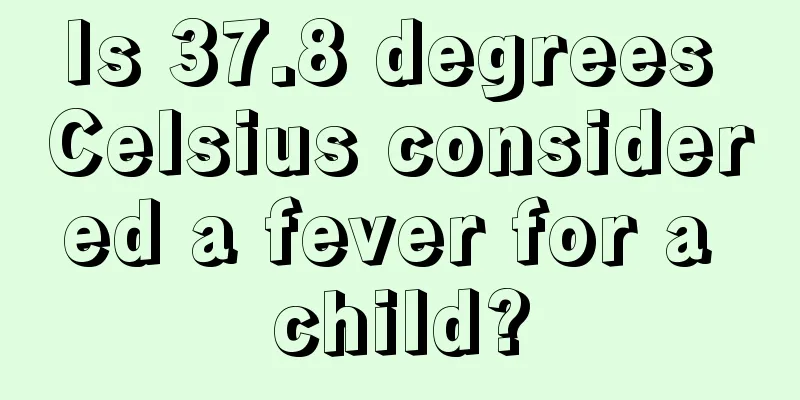What are the clinical manifestations of craniosynostosis?

|
Craniosynostosis is a common growth and developmental malformation disease. Generally, patients with craniosynostosis will have symptoms such as bulging fontanelle, drowsiness or prominent scalp veins. Parents must pay attention to it. The cause of this disease is not clear yet. Patients with craniosynostosis may also have mental retardation, mental depression or epilepsy, which can cause great harm to the baby. Therefore, craniosynostosis must be treated in time. What are the symptoms of craniosynostosis?1. Trigonocephaly This type is rare, accounting for about 5% to 10%. It is caused by the early closure of the frontal suture, but some frontal sutures are still open. Its characteristics are that the edges of the squamous part of the frontal bone at the frontal suture protrude forward at an acute angle. The head is triangular when viewed from above. The frontal bone is short and narrow, the anterior cranial fossa becomes smaller and shallower, the two eyes are too close, and there is a bone ridge-like thickening at the frontal suture. It is often complicated by other deformities. 2. Scaphocephaly Also known as dolichocephaly, it is the most common skull deformity in craniosynostosis caused by early closure of the sagittal suture alone, accounting for about 40% to 70%. The sagittal suture closes prematurely, and the head is restricted from developing laterally, that is, expanding forward and backward. As a result, the cranial vault is elongated front to back and narrow left to right, making the head saddle-shaped. The occipital and frontal poles are over-bulging, and the frontal bone can be very high. The frontal bone forms a pear-shaped forehead due to the narrowness of the temporal fossa. The scaphocephaly caused by the early closure of the sagittal suture is mostly male, with a male to female ratio of 4:1. Occasionally, there is a family history.
Also known as hemicephaly, it is unilateral hypoplasia of the frontal bone caused by unilateral coronal suture ossification, accounting for about 4%. The skull grows asymmetrically on both sides. The frontal bone on the affected side is flat and retracted, and the superior orbital margin is raised and retracted. The development of brain tissue on the affected side is affected. The anterior fontanelle still exists but is biased towards the healthy side. The premature closure ridge can be palpated in the midforehead. The asymmetry of the frontal bone affects the morphology of the entire cranial vault, the sagittal suture is deviated to the diseased side, and the frontal bone and parietal bone on the healthy side are excessively bulging. The ossification of the unilateral coronal suture can penetrate into the pterion and skull base. Therefore, plagiocephaly is almost always accompanied by facial asymmetry, which worsens with age. The distance between the eyes becomes smaller, the forehead becomes narrower, and the auricle and external auditory canal may also be asymmetrical but usually not obvious. The orbital and nasal deformities are more obvious. Plagiocephaly is often accompanied by mental retardation, cleft palate, cleft palate, urinary system malformation and holoprosencephaly. 4. Acrocephaly Also known as tower-shaped skull, it is more common and is caused by premature closure of all cranial sutures. Due to the small resistance of the anterior fontanelle, the growth of the skull is restricted in all directions. Therefore, the head grows upward in a tower shape, the base of the skull is compressed and sunken, the eye sockets become shallow, the eyeballs protrude, and the paranasal sinuses are underdeveloped. As the brain tissue stretches vertically, the superior-inferior diameter of the skull increases and the anterior-posterior diameter shortens. The anterior cranial fossa can be shortened to 1.5 cm, the optic foramen becomes smaller, the superior orbital fissure shortens, the gyral pressure marks increase significantly, the sella turcica enlarges, the anterior fontanelle closes late, the frontal bone retracts or rotates backward, making the frontal bone and the nasal ridge form a straight line, and the frontonasal angle disappears. A typical case is a protruding skull apex. Frontal bone rotation is the main cause of skull deformity. The midface may be normal. It is worth pointing out that acrocephaly will not show obvious clinical manifestations before 2 to 3 years old. This is because in many cases the skull is normal at 1 year old and typical acrocephaly only appears at 4 years old. True acrocephaly with syndactyly of the hands or feet is called Saethre-Chotzen syndrome. Fat chondrodysplasia is characterized by chondrodysplasia, optic atrophy, enlarged head, broad and flat nose, and thick lips. It also belongs to the category of acrocephaly and is common in infants and young children. The sick children have shortened arms and lower limbs, accompanied by mental retardation, visual impairment, and lipid deposition in the cornea.
It is caused by premature ossification of the coronal sutures on both sides. After the closure of the coronal sutures on both sides, the forehead becomes symmetrically flat, so it is also called flat head or broad head. It accounts for about 14.3% of the patients. The ossification of the coronal sutures on both sides of the skull causes developmental disorders of the anterior-posterior diameter of the skull, compensatory widening of the transverse diameter, and elevation of the skull top. Therefore, it manifests as a widened head, a wide and flat forehead, an enlarged middle cranial fossa, shallow eye sockets, underdeveloped orbital ridges, and obviously protruding eyeballs like "goldfish eyes". The child will show obvious deformity a few weeks after birth. The upper part of the frontal bone is high and wide, while the lower part is retracted, flat and sometimes concave. The upper part of the high and wide frontal bone often protrudes in a spherical shape above the facial structure; the lower part is retracted, pulling the nasal bone backwards and causing the bridge of the nose to sink. The nasopharynx becomes smaller, and sometimes the skull base and hard palate are deformed. Children often have recurrent upper respiratory tract infections. The ossified coronal suture is palpable as a beaded bone nodule 6. Crouzon's craniofacial dysplasia, also known as Crouzon's craniofacial dysplasia or Crouzon's type craniofacial stenosis, was first reported by Crouzon in 1912. The main features of this disease are: (1) A huge skull with early closure of cranial sutures, most commonly the coronal and lambdoid sutures. The skull is bulging due to the ossification of the anterior fontanelle. (2) The normal mandible is relatively protruding compared to the small maxilla, and the facial nasal and maxillary retraction causes the bite to be reversed, forming a pseudo-prognathic deformity to a certain extent. (3) The nose is overly protruding and forms an aquiline nose. The orbital wall is pushed forward, the upper orbital margin is retracted due to brachycephaly, and the lower orbital margin is also retracted due to mandibular retraction, resulting in extreme protrusion of the eyeball. This protrusion of the eye, coupled with widening of the orbit, forms the frog eye of Crouzon disease. Patients may experience ocular motor paralysis. (4) Most of them are hereditary and have a family history, also known as hereditary craniofacial skeletal development disorder (5) This disease may cause increased intracranial pressure, vision loss, and mental retardation. Relevant specialists believe that craniosynostosis is sometimes accompanied by complications such as neurological atrophy and intellectual disability, which should attract more attention. In addition to the above main symptoms, as parents, no one wants their children to lose at the starting line. They should not let the troubles caused by craniosynostosis affect their psychology and lead to unhealthy growth. It is necessary to understand the symptoms of craniosynostosis, and a rough judgment can be made based on these symptoms. |
<<: What to do if your child keeps hiccuping
>>: What should I do if my child has tracheal inflammation?
Recommend
What are the nutritional breakfast recipes for primary school students?
Now the living standard is gradually improving, s...
How to deal with fever in baby's hands and feet
When children are young, their body's resista...
2 months old baby
The physical development and many aspects of a tw...
Reasons for rapid breathing in two-month-old babies
In fact, many parents will find a phenomenon, tha...
What should I do if my child always loses his temper?
Nowadays, families often have only one child, so ...
White blisters on baby's gums
Some mothers found that there were many white bub...
The child is not growing, why don’t you see a doctor? Parents will regret it forever
If your child doesn't grow taller, should you...
What to do if a newborn is malnourished
Many young children suffer from malnutrition at b...
What are the methods of expectorant diet for children?
I believe that many parents are most worried abou...
What is the best age for circumcision?
Children are the apple of parents' eyes. Pare...
Causes and treatment of perioral dermatitis in children
Introduce the causes and treatments of perioral d...
What are the symptoms of calcium deficiency in three-month-old babies?
In daily life, as children are born, many parents...
Development indicators of infants in April
As parents, when our children become unwell, we a...
What to do if you have cerebral palsy and drool
Drooling is a relatively common symptom of cerebr...
What food is good for children with diarrhea?
When children have diarrhea, parents are most wor...









